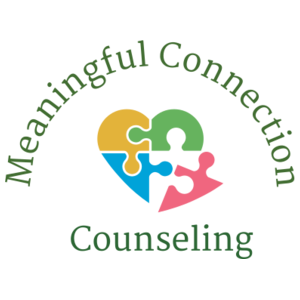EMDR Therapy — A Therapeutic Approach To Reprocessing Past Experiences And Shifting Negative Core Beliefs

Eye Movement Desensitization and Reprocessing, or EMDR Therapy, is designed to help people reprocess and transform negative core beliefs about themselves, others, and the world. These beliefs, often influenced by early distressing experiences, whether significant or minor, can be linked to attachment-related distress, such as feelings of rejection or not being responded to in a supportive way.
The reprocessing occurs through dual attention bilateral stimulation, which involves your therapist guiding you through exercises like eye movements or using handheld tappers. This method enables you to access traumatic memories and establish new, more adaptive associations with them, ultimately influencing how you engage with others and navigate your daily life.
EMDR does not require you to talk through all of the details of the difficult event you experienced. Instead, it allows your body’s natural healing ability to start to process the emotions, thoughts, and behaviors that have resulted from the distressing experience. Other approaches often work just at the higher level of cognition and do not always allow for a deeper healing.
Revisiting The History Of EMDR
EMDR was founded in 1987 by American psychologist Dr. Francine Shapiro. Initially designed to treat Post Traumatic Stress Disorder (PTSD), it stems from the Adaptive Information Processing model. This is the idea that we have ongoing symptoms of distress from past events due to a lack of processing and healing.
Francine discovered this technique by accident one day as she was walking through a park and noticed that moving her eyes rapidly back and forth seemed to reduce her distress around negative experiences. She then created a standardized protocol using 70 volunteers and conducted several other research studies after this which validated her results.
Who Can Benefit From EMDR?
In more than two dozen randomized studies and a recent meta-analysis by Lee & Cuijpers, EMDR has been demonstrated to have positive effects on the treatment of trauma in reducing overall distress and strengthening more adaptive cognitions. (1)
In my practice, I use EMDR therapy to treat adult clients struggling with anxiety, depression, relationship issues, grief, and all types of trauma. All of these mental health concerns stem from past experiences that caused distress that we adapted to in ways that reinforced ongoing negative beliefs and stored unhealthy emotional patterns.
How EMDR Treatment Works
EMDR Therapy takes place in eight different phases, which include:
1. History Taking (1-2 sessions)
- Initial phase involving intake and trauma history assessment.
- Identification of prominent memories for potential reprocessing.
- Limited details to prevent activation and aid in treatment planning.
2. Client Preparation
- Stabilization and grounding skills development.
- Distress tolerance and addressing dissociation.
- Structural dissociation treatment.
3. Assessment
- Identification of specific memories to target for processing during desensitization.
- Sets the foundation for the subsequent stages of therapy.
4. Desensitization
- Processing distress using dual attention bilateral stimulation (eye movements or tapping).
- Focusing on targeted memories identified in the assessment phase.
5. Installation
- Reinforcing a more adaptive or positive belief.
- Slow tapping is used to install the positive belief at the end of processing.
6. Body Scan
- Ensuring there is no residual tension in the body.
- The body should feel relaxed, indicating the full processing of memories.
7. Closure
- Debriefing the session and discussing activities between sessions.
- Providing additional grounding if necessary.
- Addressing any unresolved issues from the session.
8. Re-evaluation
- Periodic revisiting of targeted memories to assess the effectiveness of treatment.
- Ensuring lasting positive changes and addressing any emerging issues.
EMDR allows clients to remove blocks that have often been there for years, allowing the mind to heal naturally so that situations can be responded to from a more adaptive and healthy perspective. This allows for more meaningful connections with others from a healthier perspective. Previously triggering situations may no longer feel triggering after EMDR processing.
Regardless of the level of trauma or distress you have experienced in your life, EMDR can be exceptionally helpful to you in your healing journey.
Nicole Acker’s Background With EMDR Therapy
Over the course of 12 years, my professional journey began with a Dialectical Behavior Therapy residency program at Phoenix Interfaith Counseling in 2008. Subsequently, in 2012, I pursued basic training in Eye Movement Desensitization and Reprocessing therapy (EMDR). Over the past decade, I have consistently engaged in advanced EMDR training alongside exploring several other therapeutic modalities designed to address complex trauma.
Throughout this time, I have applied EMDR in my work with clients, addressing a diverse range of issues such as anxiety, grief, and trauma. EMDR has proven to be an invaluable modality, facilitating the processing of various forms of distress. My exploration of therapeutic approaches has also led me to embrace innovative modalities like Deep Brain Reorienting. This was developed by Dr. Frank Corrigan, a Neuropsychiatrist with expertise in EMDR training. DBR aims to assist clients who have encountered obstacles in their EMDR processing due to the lingering impact of shock from trauma. Notably, it has shown promise toward accessing and processing preverbal and infant trauma.
Experiencing Transformative Healing Through EMDR Therapy
With EMDR therapy, you can experience relief from anxiety, trauma, grief, and relationship issues. Meaningful Connection Counseling offers the care, support, and expertise you need to truly heal.
To find out how my approach to EMDR therapy can help you, please call (480) 332-8597 or schedule a free 15-minute consultation.
(1) https://www.emdr.com/efficacy/
Request Appointment
